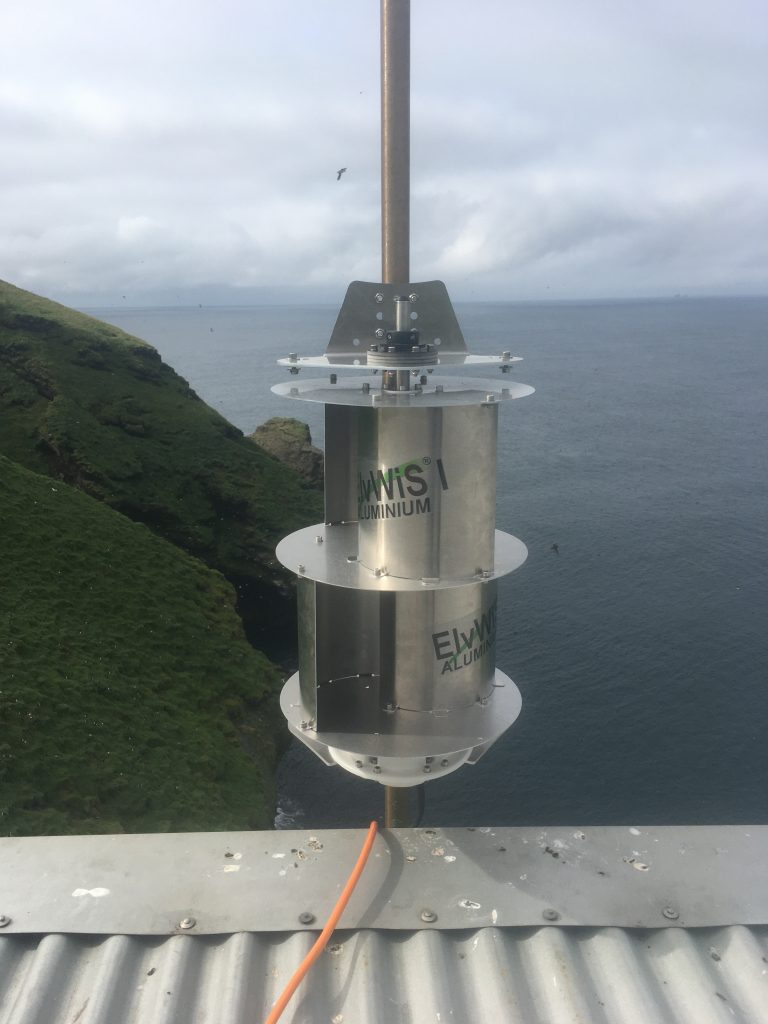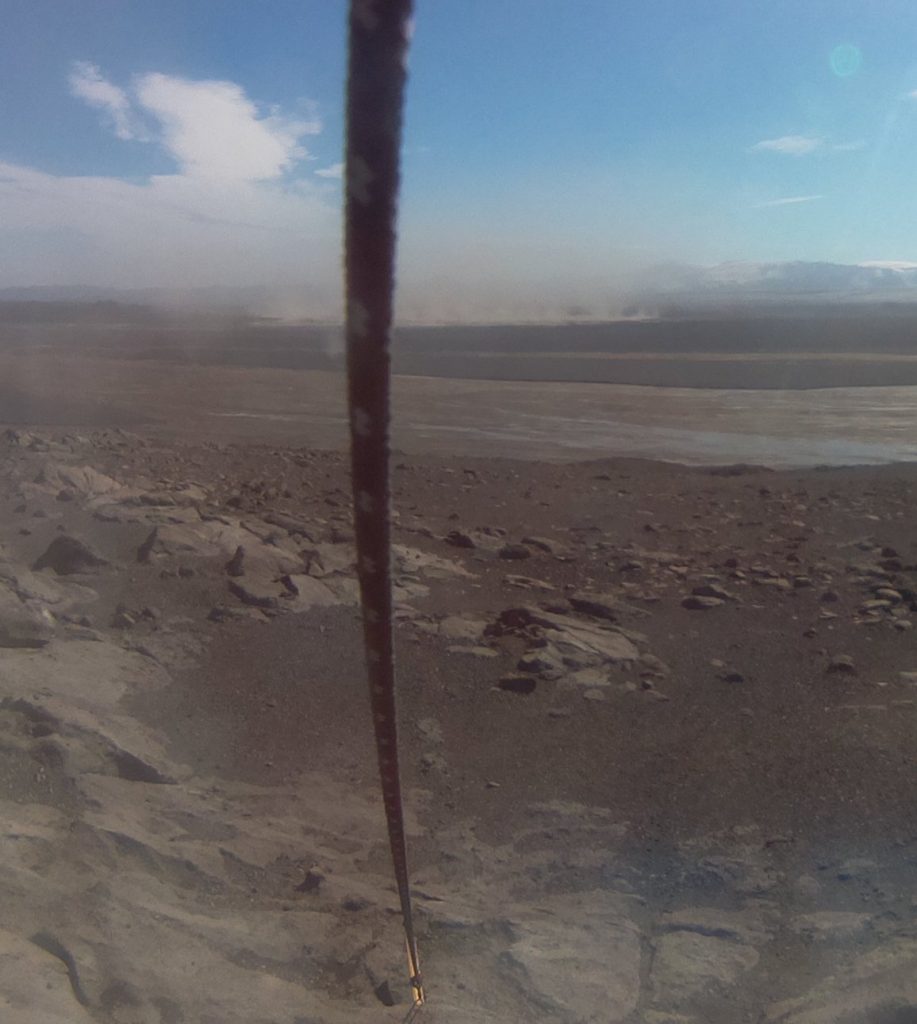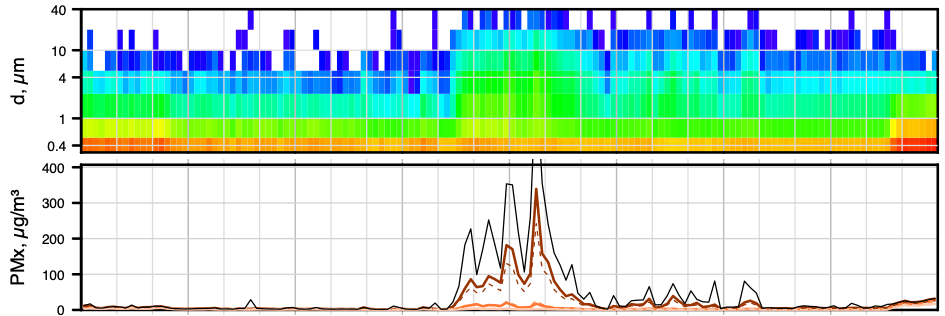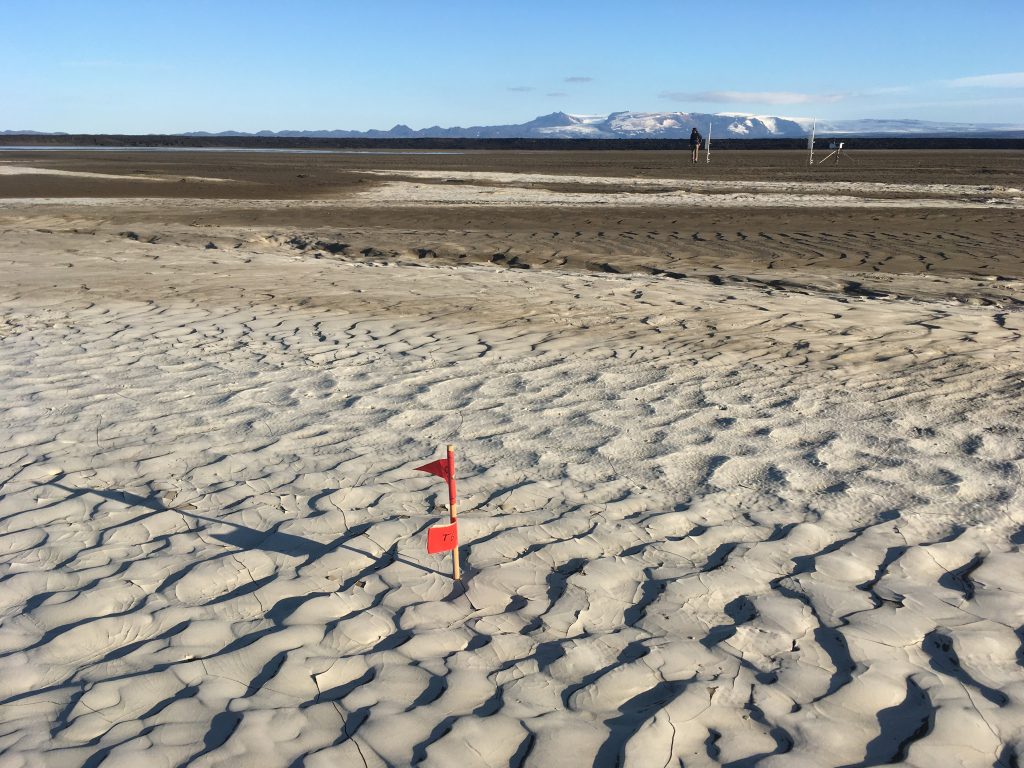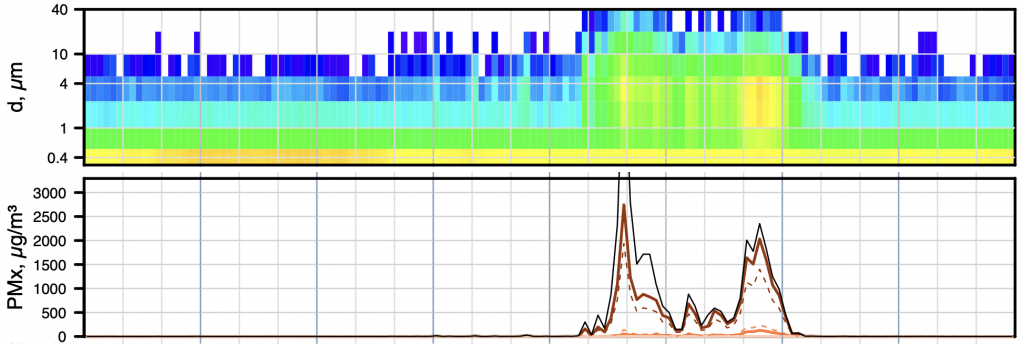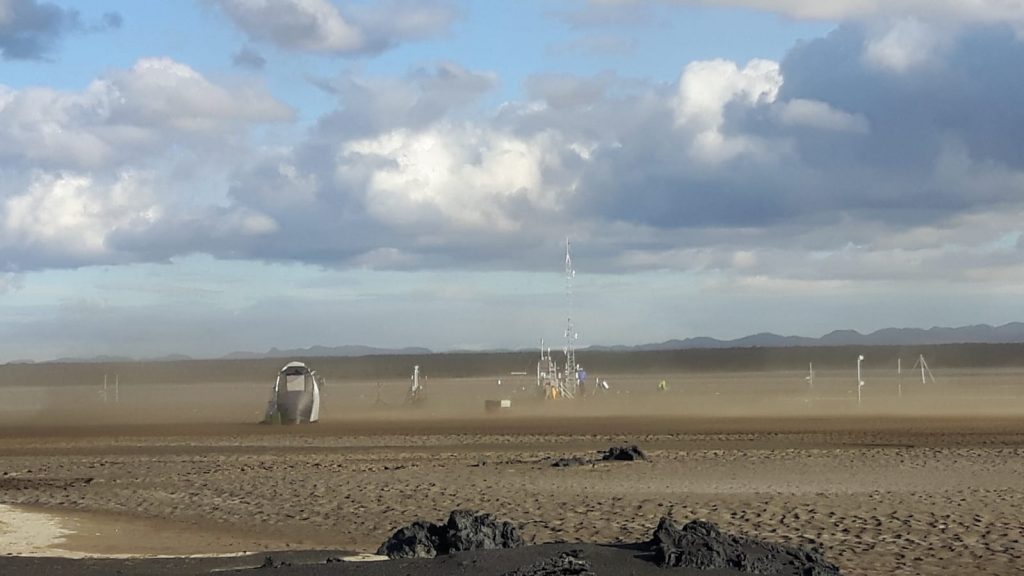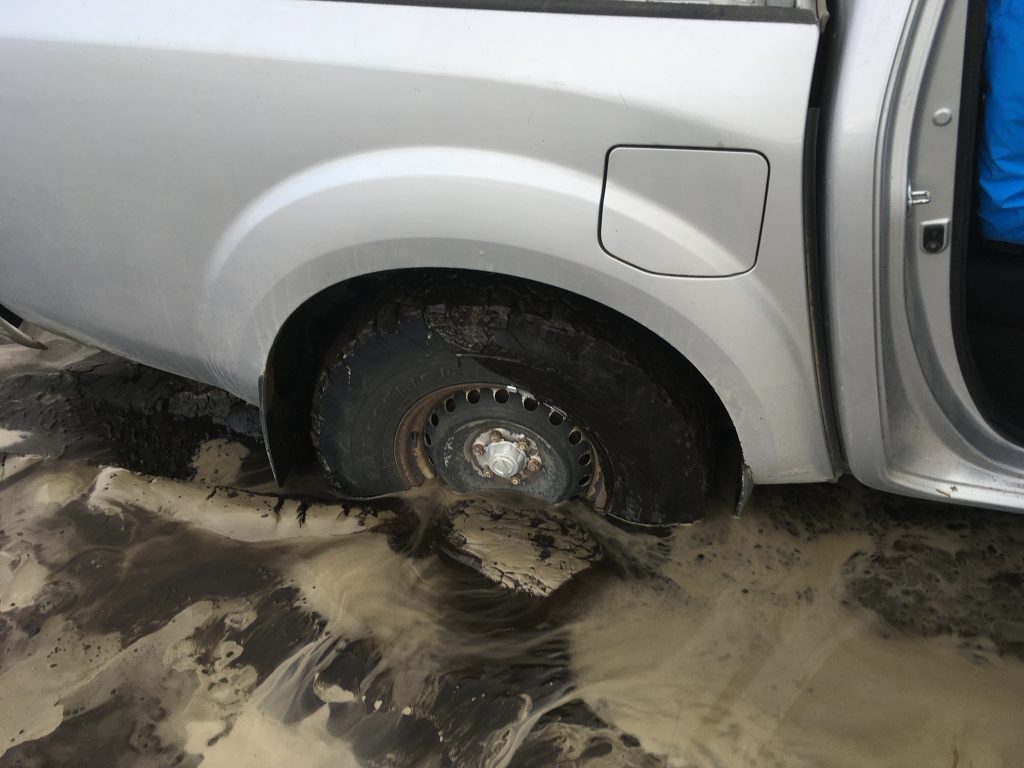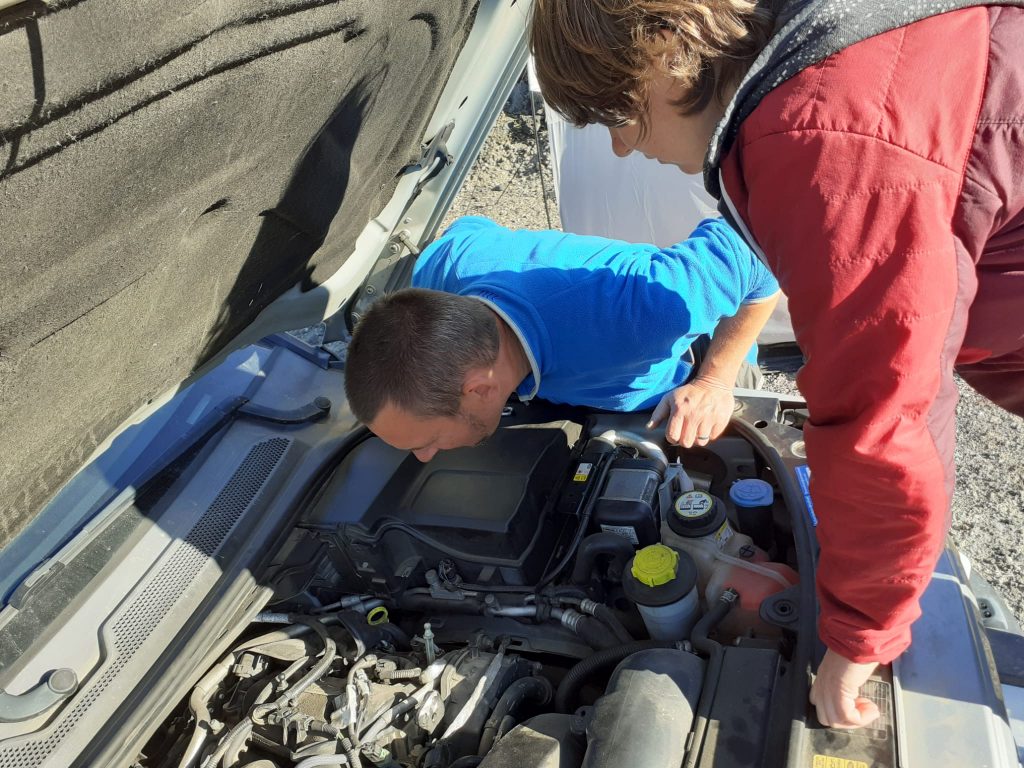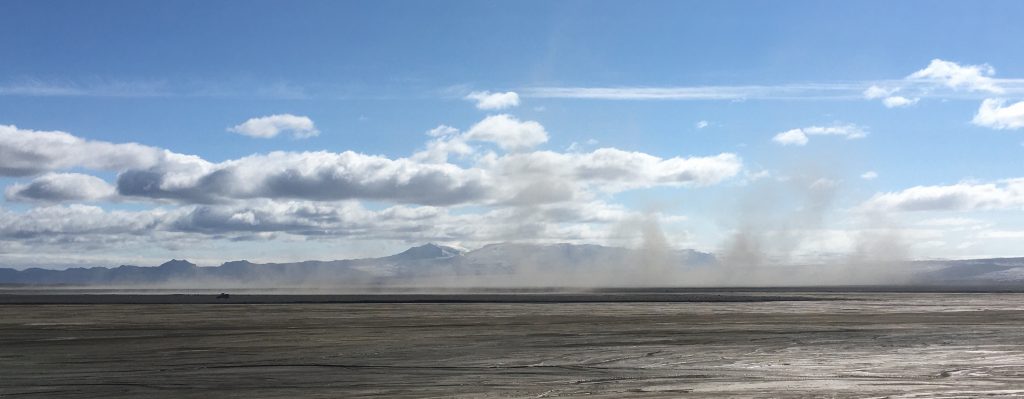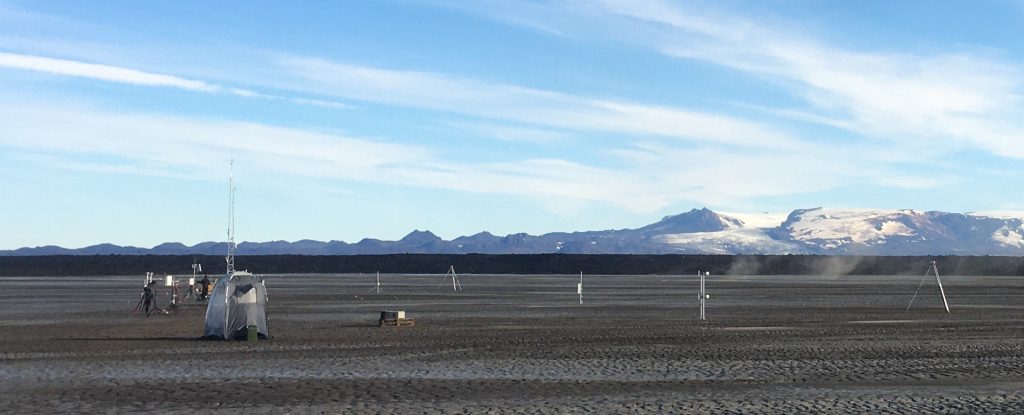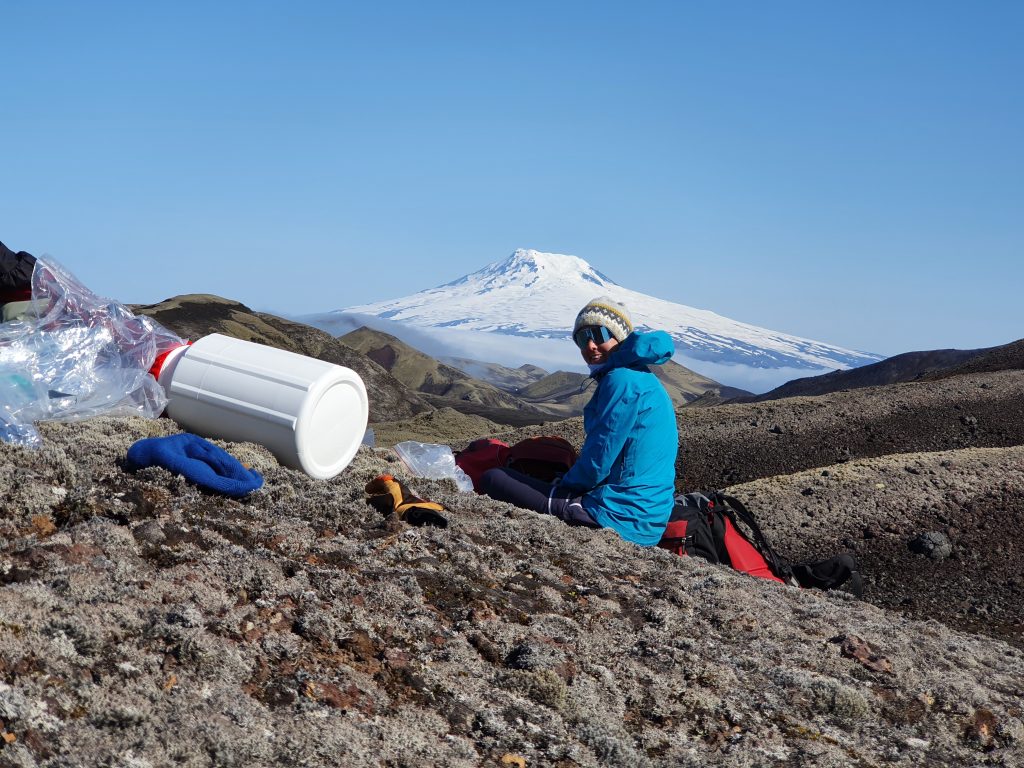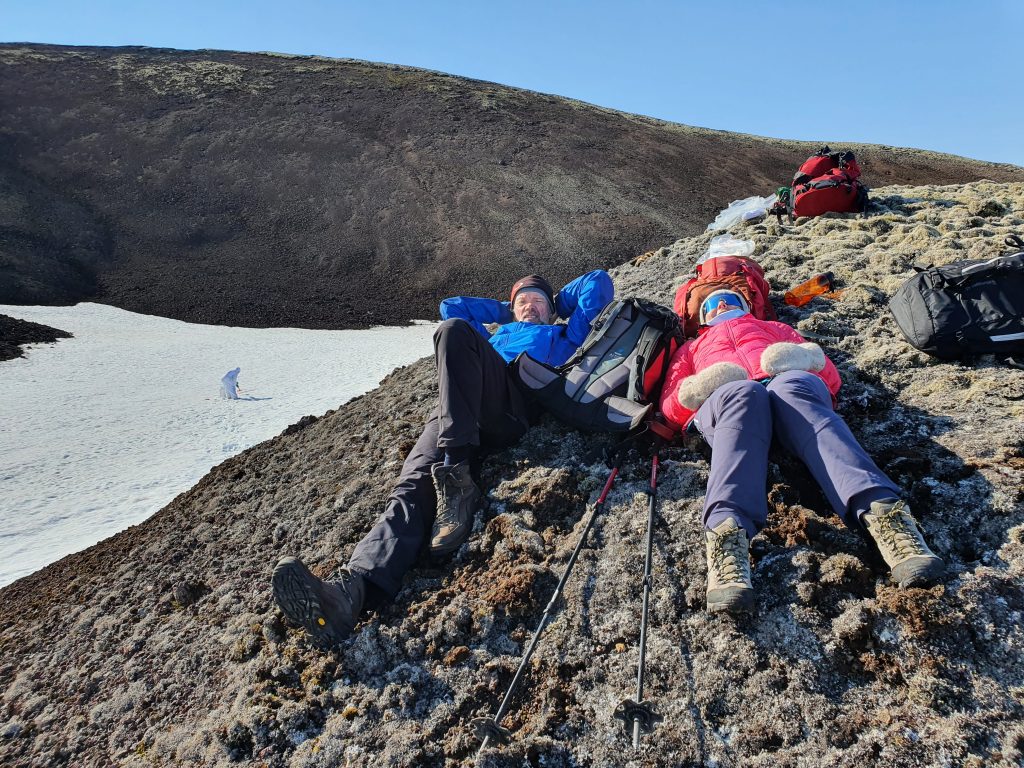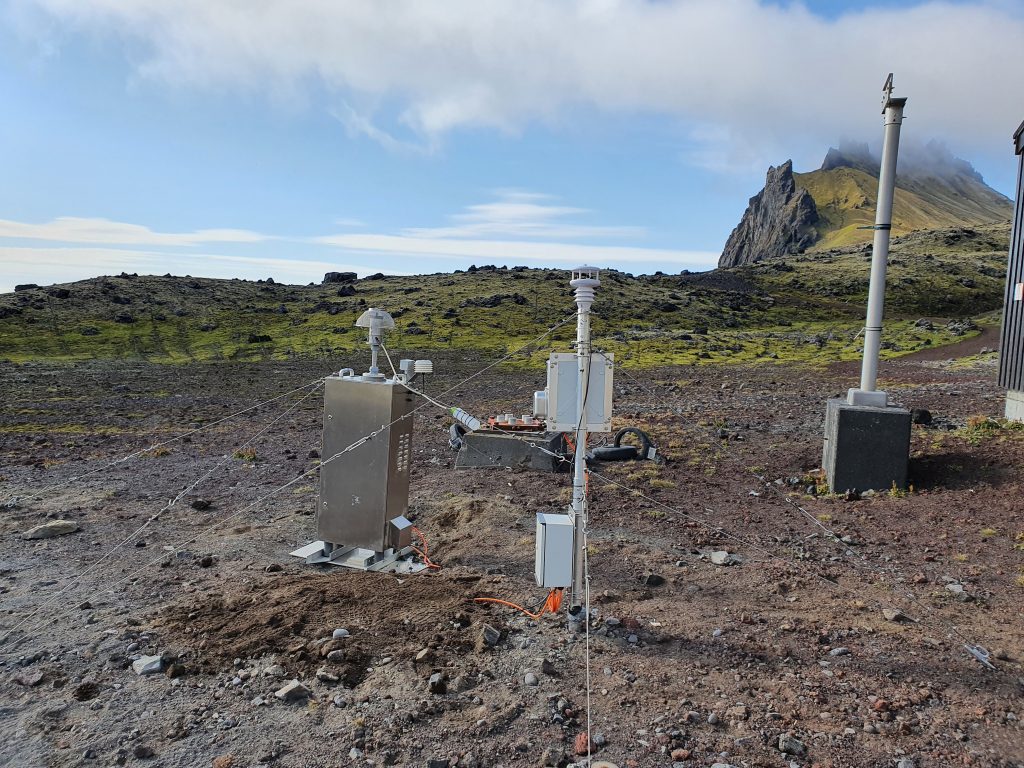We already spotted it during the first dusty days. There is another active dust source area on the other side of the river fed by the Dyngjujökull, our glacier next door. It seems to be the same sort of dust source as our Flæður, although slightly more active. A bit annoying, we admit.

Driven by curiosity how this source actually may look like, we decided to check it out today. The road up to Kverkfjöll is comparable easy to drive with a 4×4 and the landscape shaped by the volcanic eruptions is just impressive! The gravel road terminates at a parking lot close to the fringe of the glacier – just a few minutes walk away from the terminal ice where plenty of milky melt water drains out of the massive ice sheet ultimately forming river-like streams.
Is this the birth of the dust we see emitted further downstream? Still suspended in water causing its cloudy-milky colour at this point, though. But further downstream along the meandering banks, where the flow slows down, it will soon deposit a fresh layer of silt and clay ready to be uplifted into the air once it’s dry and windy.

So, where does this sediment load go? Will it form a dust source looks like the Flæður region? We are here to find out – but soon realize that the dusty places on this side of the river are too far off the road to be accessed by any means of transport that is available to us. In essence, what remains from this trip, is a gorgeous visit to the Dyngjujökull – and a glimpse at the place where the milky water starts its journey towards forming future dust sources …

